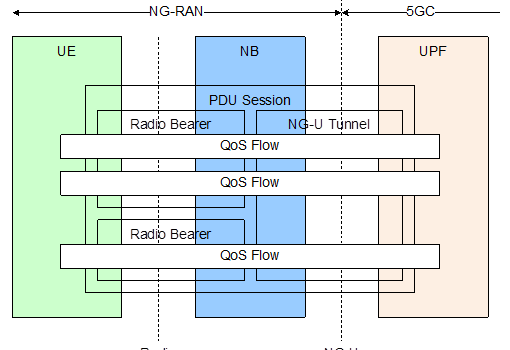In our previous blog posts, “Isolated Operations in 5G PPDR – 5G IOPS” and “Assuring 5G PPDR slice in 5GASP environment,” we highlighted the importance of resilience in Public Protection and Disaster Relief (PPDR) communications and introduced the concept of Isolated Operations for Public Safety (IOPS). Leveraging the 5G Application and Services Platform (5GASP), we enable rapid development, testing, and deployment of the 5G IOPS Network Application, bolstering the resilience and security of vital infrastructure during emergencies and disasters. Building upon that, we now delve deeper into the provisioning process of the 5G PPDR slice. By considering essential parameters, alongside the Service Slice Template (SST) and Service Descriptor (SD), we can ensure the quality and prioritization of critical communications traffic within the slice.
Exploring the Provisioning Parameters of the 5G PPDR Slice:
When defining and deploying the 5G PPDR slice, it is crucial to consider various parameters that go beyond the SST and SD IDs. These parameters play a vital role in ensuring the provision of high-quality PPDR services and prioritizing critical communication traffic within the 5G network elements (i.e., 5G UE, gNb, UPF). The 5G Quality of Service (QoS) model relies on QoS flows, which provide specific characteristics for different types of traffic within the PPDR slice, such as eMBB.

Let’s examine some of the key parameters in detail:
- QoS Flows: QoS flows within the 5G PPDR slice define the specific QoS characteristics and network behaviour for different types of traffic. Two examples of different QoS flows are as follows:
- Non-GBR QoS Flow example that serves non-mission critical traffic
- 5QI (5G QoS Identifier): 6
- Priority Level: 60
- Pre-emption Capability: Shall not trigger pre-emption
- Pre-emption Vulnerability: Not pre-emptable
- GBR QoS Flow example that is prepared for mission-critical video traffic where minimum BW (e.g. 10 Mbps) needs to be assured in uplink and downlink:
- 5QI (5G QoS Identifier): 67
- Priority Level: 15
- Pre-emption Capability: May trigger pre-emption
- Pre-emption Vulnerability: Pre-emptable
- GBR (Guaranteed Bit Rate):
- Maximum Bitrate (Downlink): 20 Mbps
- Maximum Bitrate (Uplink): 20 Mbps
- Guaranteed Bitrate (Downlink): 10 Mbps
- Guaranteed Bitrate (Uplink): 10 Mbps
- Non-GBR QoS Flow example that serves non-mission critical traffic
- Traffic filters: Filters are essential for classifying and managing traffic within the PPDR slice. They define specific rules for traffic handling based on characteristics such as Source/destination IPv4/IPv6 address, IPv6 prefix, Source/destination port number, Protocol ID of the protocol above IP/Next header type, Type of Service (TOS) (IPv4) or Traffic class (IPv6). Let’s give a practical example:
- Direction: Both (Uplink and Downlink)
- Precedence: 1
- Protocol ID: 6 (e.g., TCP)
By carefully defining and configuring these parameters, the 5G PPDR slice can effectively prioritize critical communications traffic (i.e., mission critical video), ensure the allocation of necessary radio and core network resources, and maintain reliable connectivity even during network congestion in the case of extreme disaster scenarios.
Conclusion:
In this follow-up blog post, we delved into the provisioning aspects of the 5G PPDR slice within the context of Isolated Operations for Public Safety (IOPS) and the 5GASP environment. By considering parameters such as QoS flows and filters alongside the SST and SD, we can prioritize and guarantee the quality of critical communications even during the extreme emergencies or disasters. This approach, facilitated by the 5GASP framework, enables efficient development, testing, and deployment of the 5G Network Application, ultimately strengthening the resilience and security of our mobile networks and essential services. With a closer look at the provisioning process, we are better equipped to leverage 5GASP and expedite the deployment of 5G PPDR slices, ensuring the continuity of vital communication in times of crisis.


